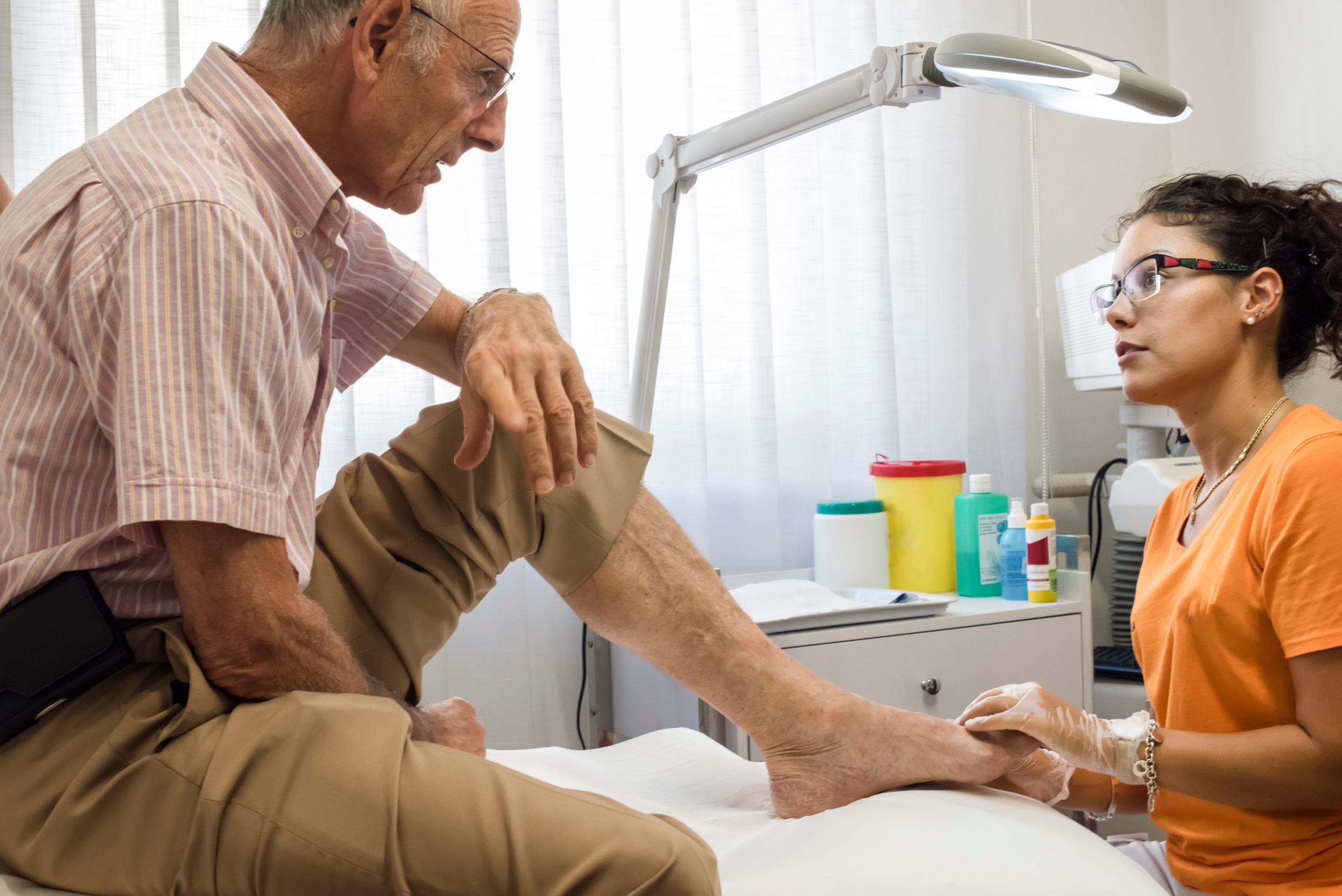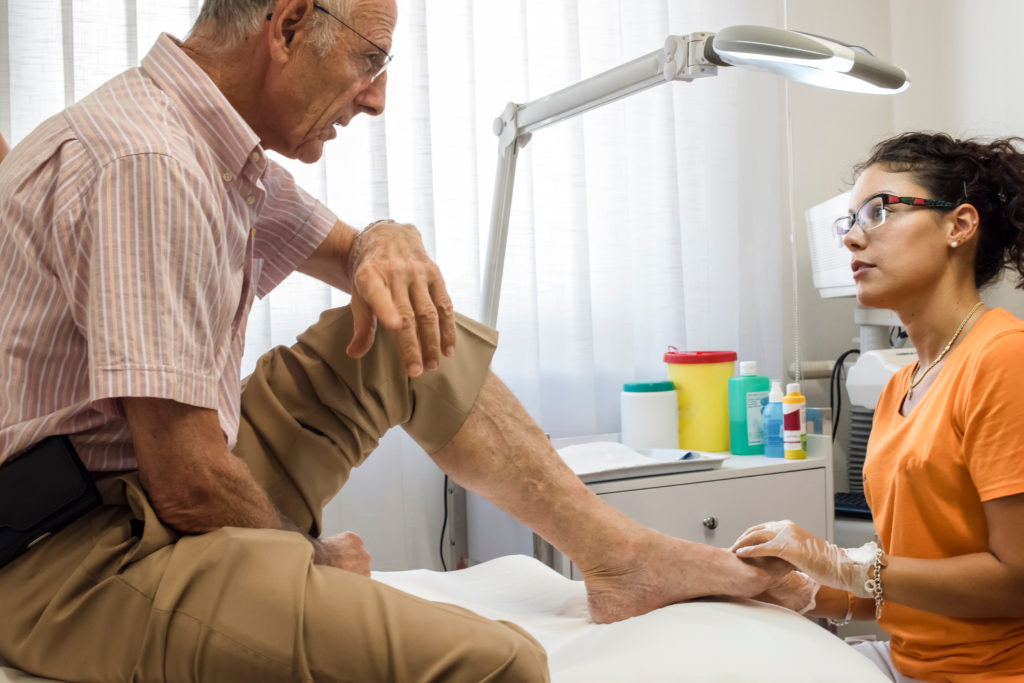

Watching our parents grow older and encounter health scares, face age-related changes or develop medical conditions can be a frightening experience. It leaves many people feeling stuck between wanting to help, and there being only so much that they can practically do.
When it comes to diabetic foot disease, however, this is an area that you can genuinely help with – both in helping prevent potentially limb-threatening complications for those already diagnosed with diabetes, and in monitoring for signs that diabetes may have developed through the changes you see in your parents’ feet.
Here’s a look into how to spot the signs of diabetic foot disease in your parents’ feet, what it means, why it’s important, and what you can be doing to help protect their foot health.
Diabetes: The Risks & Reality
The reality is, that in Australia, over one million adults have diabetes, and the prevalence only increases as we grow older, with almost one in five men and one in six women over the age of 75 years diagnosed. Diabetes is a whole-body disease that interferes with the way the body removes the sugar out of our bloodstream after we eat, leaving high concentrations of sugar in the bloodstream. This becomes dangerous as it produces toxins that negatively affect all body organs and systems, including our vision, heart, kidneys – and the circulatory system and the nerves in your feet and legs.
How Can Diabetes Affect The Feet?
Diabetes impairs a person’s ability to fight infection, supply enough oxygen and nutrients to their cells, efficiently heal wounds, and feel what is happening to and around their feet. Specifically, this occurs because a person’s sensation and circulation are affected:
Sensation (Peripheral Neuropathy)
Our nerves are responsible for our ability to feel, detecting everything from a feather being moved across our toes, to standing on an uncomfortable pebble in our shoe. As diabetes can damage the nerves, our ability to feel can fade, become mixed up, and may eventually be lost altogether. This is called peripheral neuropathy.
When we can’t properly feel what is happening around our feet, this makes us vulnerable to sustaining damage, even something as simple as a scrape or a blister from our shoes, and not knowing it has occurred. This means that we can’t take the right measures to look after the wound and protect our feet, leaving them vulnerable to further damage, infection, the wound turning into an ulcer, and more.
Circulation
When diabetes damages the blood vessels and impairs your circulation, your tissues aren’t able to receive the blood flow they need to thrive and carry out their essential cellular processes most efficiently. This means that when you sustain a wound, it will take longer for the body to heal, leaving it open and vulnerable to picking up an infection. If an infection takes hold, it is more difficult for your body to fight, exposing you to a range of potential problems.
Together, impairments in both sensation and circulation are some of the key reasons why 34% of people with diabetes are expected to develop a foot ulcer in their lifetime, approximately half of which become infected, and 15% of which then require an amputation.
What Signs Should I Be Looking For?
While some signs of diabetic foot disease are obvious, like wounds, others are more discreet and can also be linked to natural age-related changes, such as the skin growing thinner and more fragile over time. Make a note of:
- Wounds that haven’t closed over after 3-5 days
- A pale, dry or cracked skin appearance
- Brittle toenails
- Perpetually cold or blue feet
- Lack of hair growth on the toes
- Recurring skin infections
- Ulcers
- Areas of friction or damage that look like they should be painful, but your parents have not reported any pain or even noticing it
- Claw toes, hammer toes or bunions developing
- More corns and calluses
To learn more about why a number of these changes occur, read this article.
What Should I Do If I Suspect My Parent Has Diabetic Foot Disease?
If you suspect that your parents’ feet may be affected by diabetes, the first step is to bring them in to see a podiatrist. Your podiatrist is an expert on all things to do with the feet, and works extensively with those with diabetes to help treat their feet, manage their risks, and promote their foot health.
The appointment you want to book is called a diabetic foot assessment, and it’s a comprehensive assessment that all My FootDr podiatrists take very seriously, ensuring they take the time to understand exactly what’s going on, to what extent the feet are being affected, answering any and all questions, and
creating a plan to help your parents best take care of their feet. We also invite you to come along with them to this appointment, learn about the assessment findings and what they mean, and learn strategies to best support your family. Many family members find coming along invaluable, and it really broadens their understanding of diabetes and what it really means for foot health.
Tips To Care For Your Parents At Home
- Encourage or help them to wash and dry their feet thoroughly every day, including drying well between the toes to prevent moisture from becoming trapped
- Look over their feet every time you visit, being sure to check the top, bottom and sides of the feet, including between the toes. Look for marks, spots, cuts, swelling or redness that is not normal.
- If your parents have trouble reaching their feet and checking their feet themselves, consider organising a floor mirror for them that they can easily hold their feet up to
- Ensure they let you know any time they have any concerns with their feet, or notice something abnormal. In this case, book in with a podiatrist or a GP
- Check their shoes – these should be well fitted with adequate depth and width for the toes. Having good, supportive shoes minimises their risk of damage to the feet
- Check their socks – ideally these should be cotton with no elastic in the tops, as they will absorb sweat and reduce pressure at the top of the sock line. There are also seamless diabetic socks available
- Book in your parents diabetic foot assessment every year
- If your parents have difficulty trimming their toenails, or get corns or calluses, consider helping your parents get podiatry nail and skin care every 6-12 weeks, during which their podiatrist will also be able to check for any warning signs
Our Podiatrists Are Here To Help
Our experienced and knowledgeable podiatrists are here to help if you or your parents have any concerns about their feet. We understand how important it is to know that your parents are being well cared for by trusted health professionals, who try to go above and beyond to build long lasting professional relationships founded on genuine care and respect.
Book your appointment with us online here or call us on 1800 FOOT DR.


